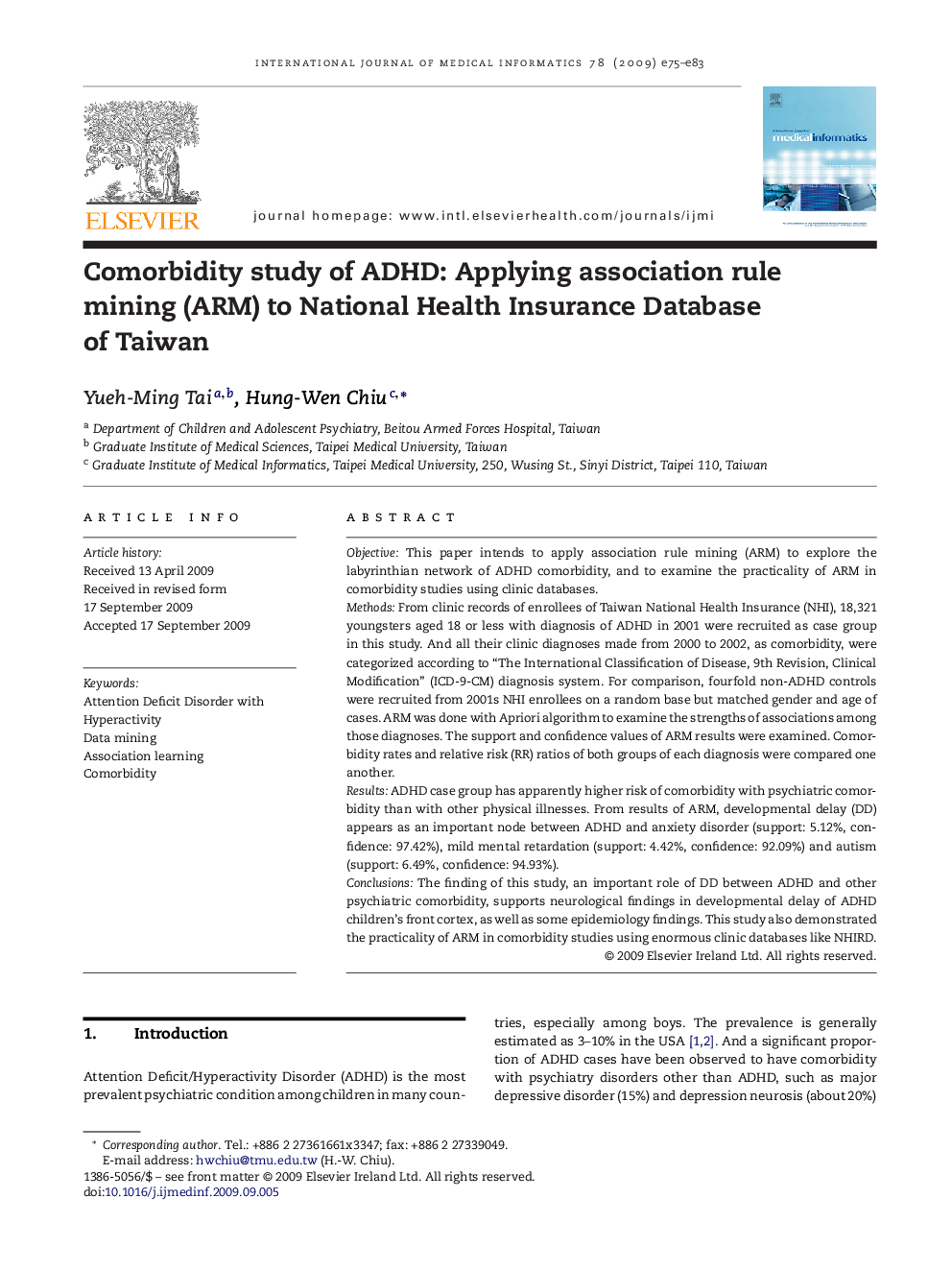| Article ID | Journal | Published Year | Pages | File Type |
|---|---|---|---|---|
| 516348 | International Journal of Medical Informatics | 2009 | 9 Pages |
ObjectiveThis paper intends to apply association rule mining (ARM) to explore the labyrinthian network of ADHD comorbidity, and to examine the practicality of ARM in comorbidity studies using clinic databases.MethodsFrom clinic records of enrollees of Taiwan National Health Insurance (NHI), 18,321 youngsters aged 18 or less with diagnosis of ADHD in 2001 were recruited as case group in this study. And all their clinic diagnoses made from 2000 to 2002, as comorbidity, were categorized according to “The International Classification of Disease, 9th Revision, Clinical Modification” (ICD-9-CM) diagnosis system. For comparison, fourfold non-ADHD controls were recruited from 2001s NHI enrollees on a random base but matched gender and age of cases. ARM was done with Apriori algorithm to examine the strengths of associations among those diagnoses. The support and confidence values of ARM results were examined. Comorbidity rates and relative risk (RR) ratios of both groups of each diagnosis were compared one another.ResultsADHD case group has apparently higher risk of comorbidity with psychiatric comorbidity than with other physical illnesses. From results of ARM, developmental delay (DD) appears as an important node between ADHD and anxiety disorder (support: 5.12%, confidence: 97.42%), mild mental retardation (support: 4.42%, confidence: 92.09%) and autism (support: 6.49%, confidence: 94.93%).ConclusionsThe finding of this study, an important role of DD between ADHD and other psychiatric comorbidity, supports neurological findings in developmental delay of ADHD children's front cortex, as well as some epidemiology findings. This study also demonstrated the practicality of ARM in comorbidity studies using enormous clinic databases like NHIRD.
